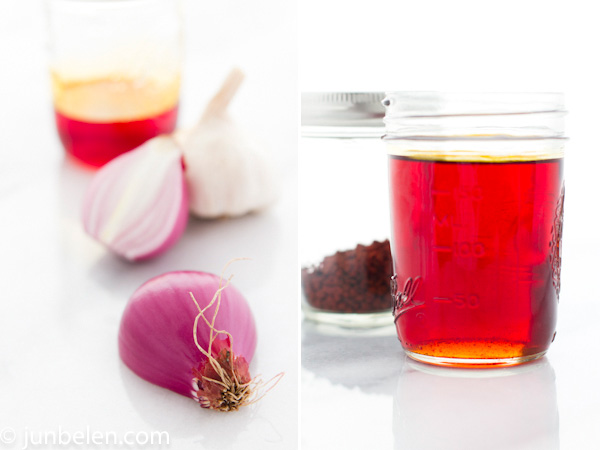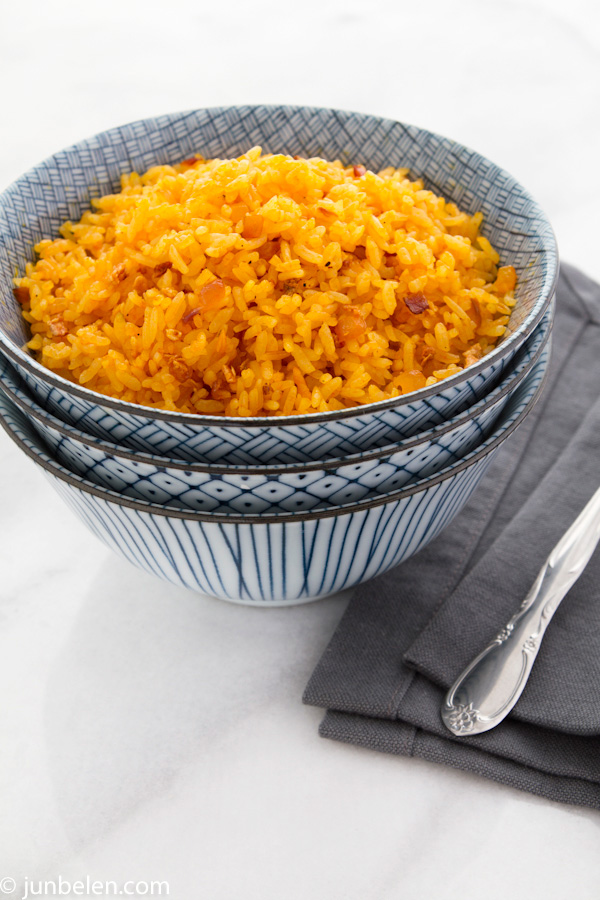Can its origin be traced back to Spain, to Latin America? To arroz amarillo, Spanish for yellow rice? A staple of Hispanic households, from Cuba to Colombia.
Or does it bear a tinge of Indonesian influence, judging from its name? Is it somehow related to the festive nasi kuning? The dish is nasi, Indonesian for rice, cooked in coconut milk with garlic, shallots, and curry leaves. Turmeric is added to lend a festive color — kuning, which means yellow in Indonesian. The yellow rice is piled pompously high in a towering heap on a platter, reserved for special occasions.
But java rice isn’t made with gata. Java rice is day-old cooked rice that’s fried in achuete oil with garlic and shallots. The achuete oil bleeds onto the rice, dressing the grains with its stunning yellow-orange hue. Java rice, with its garlic flavor and hints of sweetness from the fried shallots, pairs perfectly with Filipino-style grilled chicken or pork barbecue skewers. One is inseparable from the other, in my book.
And so, is java rice Indonesian? Is it Spanish?
Java rice is Filipino. It is a fusion of ideas and ingredients, which makes Filipino cuisine Filipino.
Java Rice Recipe, makes four to six servings
2 tablespoons achuete oil
2 shallots or a small red onion, finely diced
4 cloves garlic, crushed
3 cups leftover cooked rice at room temperature (1 cup uncooked gives roughly 3 cups cooked rice)
salt and freshly ground black pepper to taste
Heat oil in a wok or large pan over high heat. Saute garlic until lightly browned. Add shallots and saute until fragrant and softened. Mash the rice gently with clean hands, breaking apart clumps of rice. Pour rice into the hot wok and stir well, again breaking apart clumps of rice with a spatula. Stir fry until grains are separated and dry, and coated with achuete oil.

